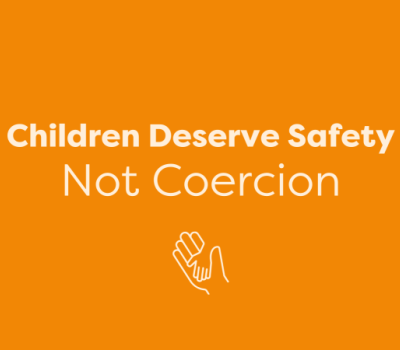Since the start of the pandemic, Utah has received nearly $600 million in emergency federal funding to ensure that our child care sector can continue to serve families despite nearly overwhelming COVID-era challenges.
In one year, at the end of September 2023, most of that funding will be exhausted. The potential impacts of this “funding cliff” are:
-
- More child care program closures,
- Much higher child care costs for families, and
- More dramatic workforce turnover due to lowered wages.
By this time next year, Utah’s working families with young children will be in even more serious trouble when it comes to child care. That is, if we don’t start talking about how to use state dollars to fund the programs that have kept child care programs stable and open over the past two years.
Utah’s child care industry struggled long before the COVID-19 pandemic. The pandemic exacerbated persistent issues in the sector such as:
-
- Tuition costs that are as high or higher than rent or mortgage payments, and
- Wages for providers so low that more than one-half (53%) of child care educators across the nation use public benefits to make ends meet.
Utah’s child care industry would not have been able to weather the COVID pandemic if not for $572 million in federal dollars, $325 million of that through the American Rescue Plan. This infusion of desperately-needed financial support:
-
- Kept hundreds of center- and home-based child care programs open even in the darkest moments of the pandemic;
- Allowed more families to access child care subsidies with fewer out-of-pocket expenses;
- Funded higher wages and even a workforce bonus for early care and education professionals; and
- Supported regional efforts to recruit new child care providers into the field, while paying startup and licensing costs for these new business owners.
Perhaps the greatest impact was felt through child care stabilization grants offered through the state Office of Child Care. These grants helped child care providers defray the unexpected costs associated with the pandemic, and stabilize their business operations so they could continue to provide care. The grants also helped many providers pay their staff members $15/hour or more. Thanks to these grants, Utah has experienced much fewer child care program closures than many other states.
While very grateful for this support, early care and education providers across Utah tell us that the impending funding cliff has them feeling worried and even hopeless about the future of their work. What they will do when the stabilization grants end in September 2023, and this long-needed government support vanishes?
A report based on surveys of child care providers in Kentucky reported that when federal American Rescue Plan COVID relief dollars run out in that state:
-
- More than 70% will be forced to raise tuition for working parents
- Close to 40% indicated they would cut staff wages, and
- More than 20% said they would permanently close their child care center.
Even before the pandemic, Utah had a 65% gap between the need for child care and the capacity of programs to provide it. When relief dollars end, this gap could widen, forcing parents to leave their jobs in an already desperate job market. The lack of accessible child care already accounts for a loss of $512 million in lost earnings, business productivity, and revenue each year in Utah.
The end of ARPA funds could also mean wage losses in a profession already vastly underpaid at $10.47/hour (or $20,940/year) in Utah.
State leaders can and need to find ways to continue these business-saving policies. With Utah lawmakers talking about overflowing state coffers and potential tax cuts, we know the money exists. These dollars can be redirected to make a real investment in the child care sector. Even small efforts like covering the costs associated with licensing or removing the bureaucratic burdens of city parking requirements can make an impact.
This month, newly released Census Bureau data showed an incredible national decline in childhood poverty. Poverty fell to the lowest level on record in 2021 and it was the largest year-to-year decline in history. The decline is largely attributed to a combination of emergency pandemic aid and the child tax credit expansion. We know that access to quality, affordable, safe child care is a good investment in children and families. Let’s learn from the lessons of the last two years and make the investment in children and families that Utah needs.












